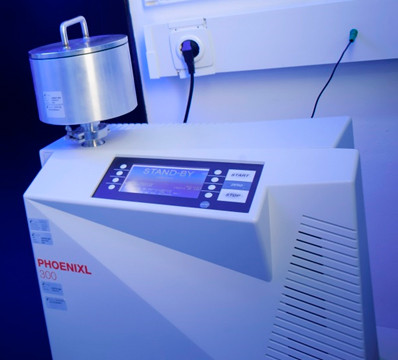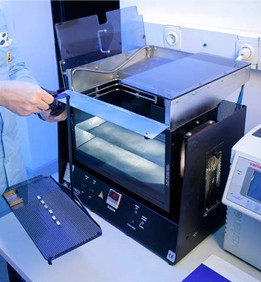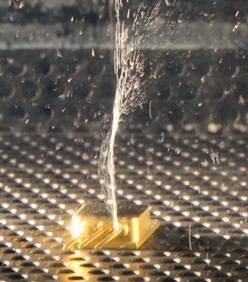The purpose of the seal test is to determine the effectiveness of the sealing of components with internal cavities, i.e. to determine their hermeticity. Defective sealing may permit the entrance of contaminants, thus reducing the effective life and reliability of devices.
There are two hermeticity testing techniques: fine leak and gross leak tests.
- Fine leak is performed using suitable pressure and vacuum chambers and a mass-spectrometer-type leak detector calibrated for helium. Samples are placed in a sealed chamber pressurized with pure helium. The pressure and test condition are decided depending on the volume of the device cavity. The samples are then analyzed by the leak detector for the presence of helium, which would be an indication of the existence of a leak.
- Gross leak. The sample is dipped in low-density freon liquid and then immersed in a higher-density, high-temperature freon bath. If the hermeticity of the sample is not adequate, low-density freon enters the sample and consequently escapes as the sample is immersed in the second bath. The test results are photographed.

Fine leak test equipment


These tests are performed in accordance with MIL-STD standards (MIL-STD-202-112 and MIL-STD-883, method 1014). And doEEEt gives you access, in just one site, to components and specifications from different systems and space agencies.
Author:
Francisco Javier Aparicio Rebollo
